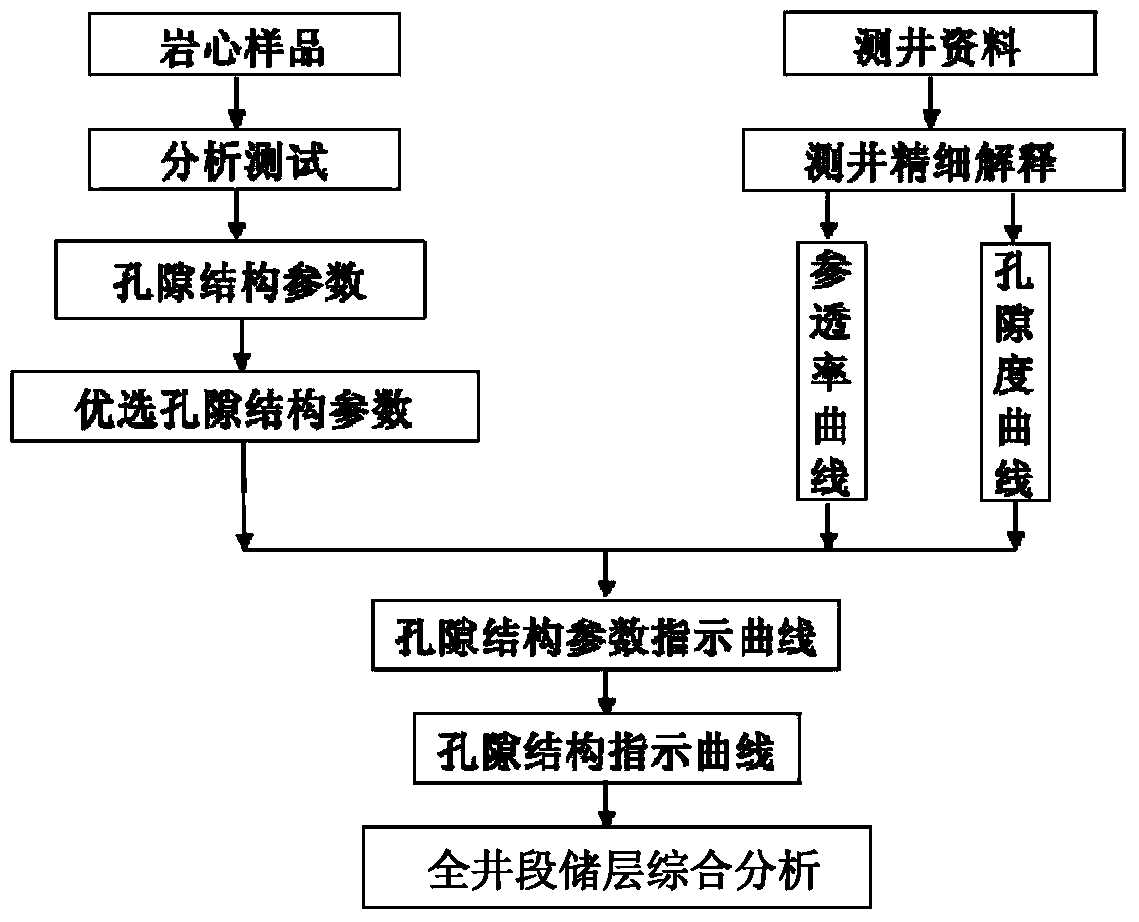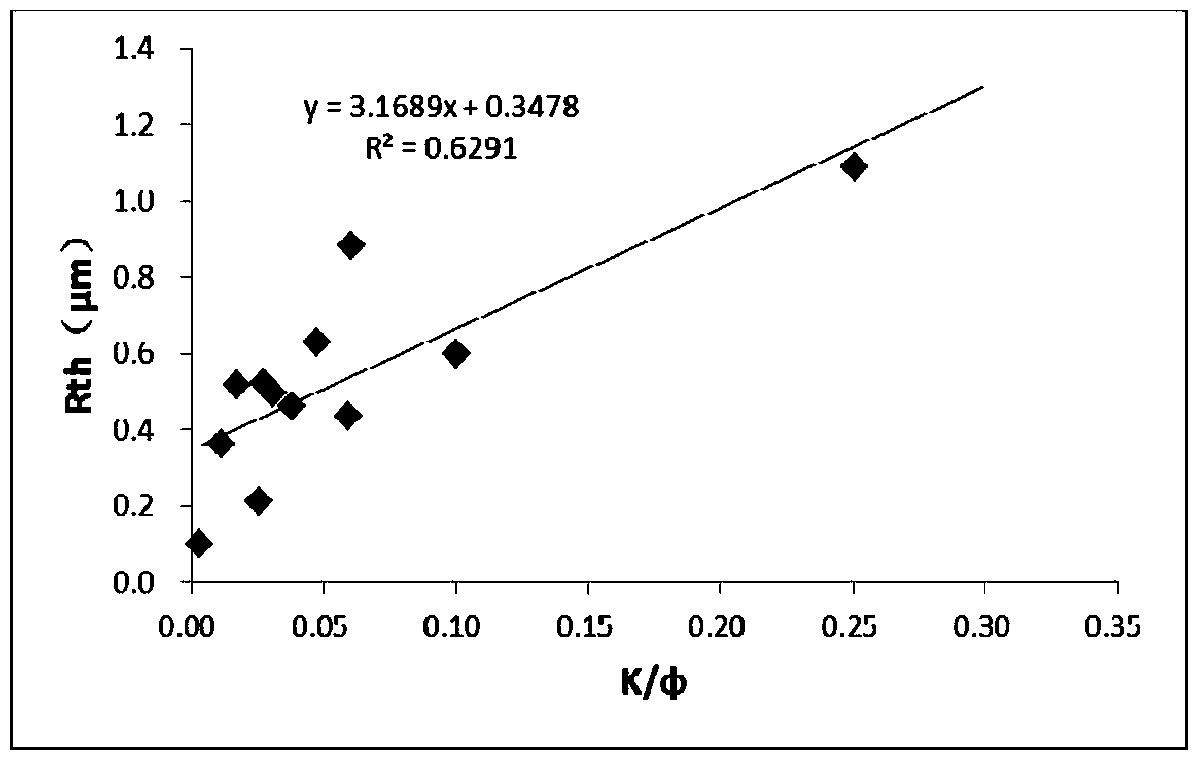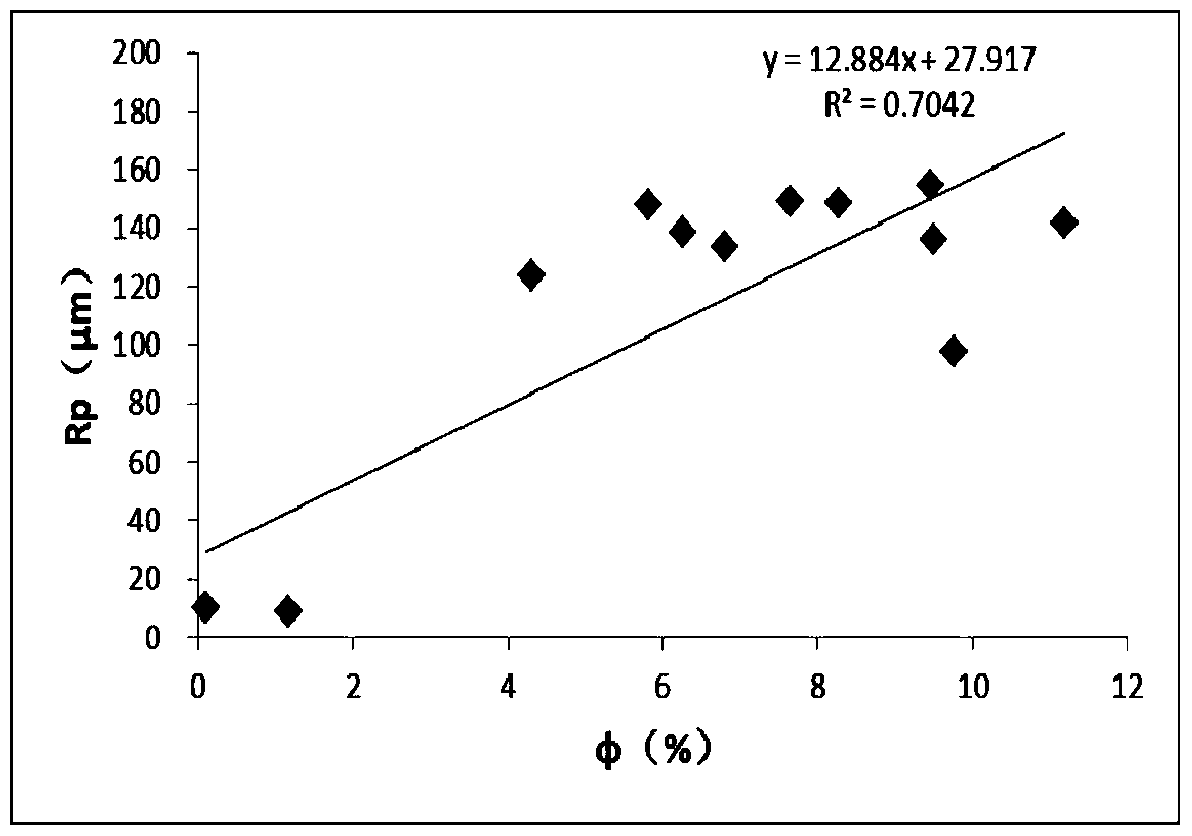A Method of Reservoir Analysis and Its Application
A technology of reservoir and target layer, which is applied in the field of reservoir analysis, can solve the problems of impossibility to take samples from the entire reservoir and low accuracy, and achieve the effects of reducing the number of sampling, accurate analysis results and strong operability
- Summary
- Abstract
- Description
- Claims
- Application Information
AI Technical Summary
Problems solved by technology
Method used
Image
Examples
Embodiment 1
[0040] The first step is to sample the core of the target layer, and carry out two analysis tests of constant-speed mercury injection and nuclear magnetic resonance on each sample of the core, and obtain their parameters including throat radius, pore radius, final mercury injection saturation, mainstream Throat radius, average capillary radius, root mean square value of throat radius, average value of pore-throat radius ratio, microcosmic average coefficient, sorting coefficient, maximum connected throat radius, displacement pressure, total pore mercury saturation, total throat inlet Parameter data for mercury saturation, total pore / throat volume ratio, and percent mobile fluid.
[0041] The second step is to use the porosity (φ) and permeability (k) curves of the entire well section of the target layer calculated by professional well logging to obtain the permeability-to-porosity ratio curve (k / φ) of the entire well section.
[0042] In the third step, for each pore structure...
Embodiment 2
[0056] The first step is to sample the core of the target layer, and carry out two analysis tests of constant-speed mercury intrusion and nuclear magnetic resonance on each core sample to obtain their throat radius (Rth), pore radius (Rp) and final progress. Mercury saturation (Shg) parameter data.
[0057] The second step is to use the porosity (φ) and permeability (k) curves of the entire well section of the target layer calculated by professional well logging to obtain the permeability-to-porosity ratio curve (k / φ) of the entire well section.
[0058] The third step is to intersect the throat radius of each sample measured in the first step with the corresponding permeability / porosity ratio calculated in the second step, and analyze the functional relationship between the two (such as a linear function relationship, Quadratic function relationship, logarithmic relationship, exponential relationship, etc.), based on the principle of the highest correlation coefficient, fit t...
Embodiment 3
[0069] Such as image 3 As shown, using the method of embodiment 1 or 2 of the present invention to obtain the pore structure indicating curve of the whole well interval reservoir in a certain oil field, the method for classifying and analyzing the whole well interval reservoir of the research target layer is as follows: the first step, calculate a certain The pore structure indicator curves of the research target intervals of 53 wells in the gas field.
[0070] The second step is to make statistics and analysis on the pore structure index (Rc) of the reservoir interval in the target interval of each well.
[0071] The third step is to carry out reservoir analysis and fluid interpretation for the wells that have undergone oil and gas testing in the target intervals in the study area, determine the fluid production intervals, and divide the reservoirs into I, II, and For class III, the distribution range of pore structure index (Rc) of each reservoir is calculated statisticall...
PUM
 Login to View More
Login to View More Abstract
Description
Claims
Application Information
 Login to View More
Login to View More - R&D
- Intellectual Property
- Life Sciences
- Materials
- Tech Scout
- Unparalleled Data Quality
- Higher Quality Content
- 60% Fewer Hallucinations
Browse by: Latest US Patents, China's latest patents, Technical Efficacy Thesaurus, Application Domain, Technology Topic, Popular Technical Reports.
© 2025 PatSnap. All rights reserved.Legal|Privacy policy|Modern Slavery Act Transparency Statement|Sitemap|About US| Contact US: help@patsnap.com



